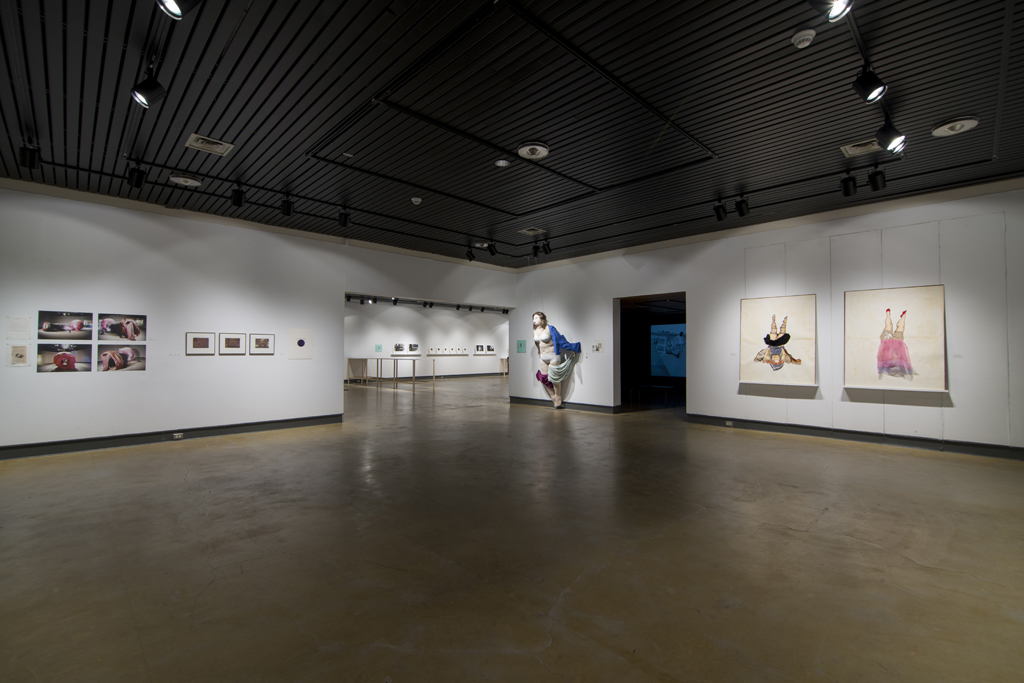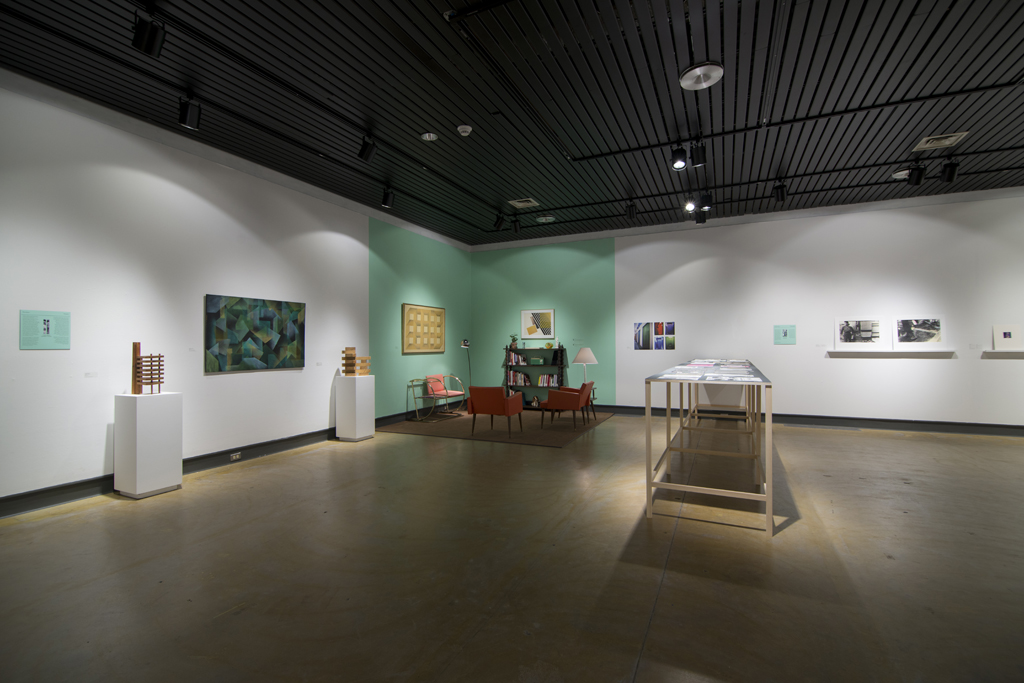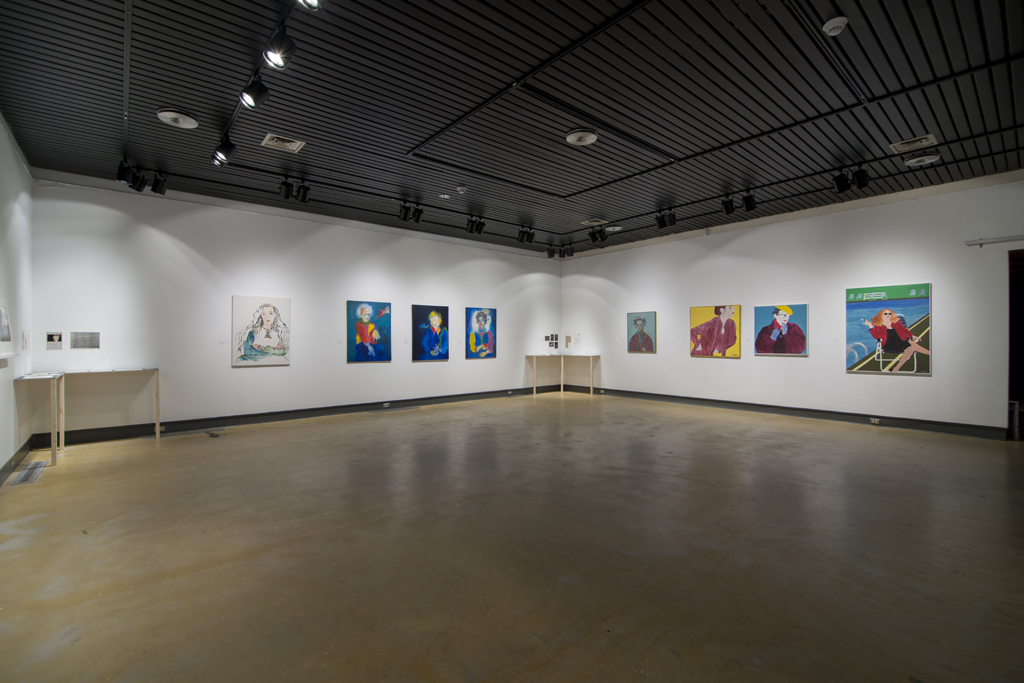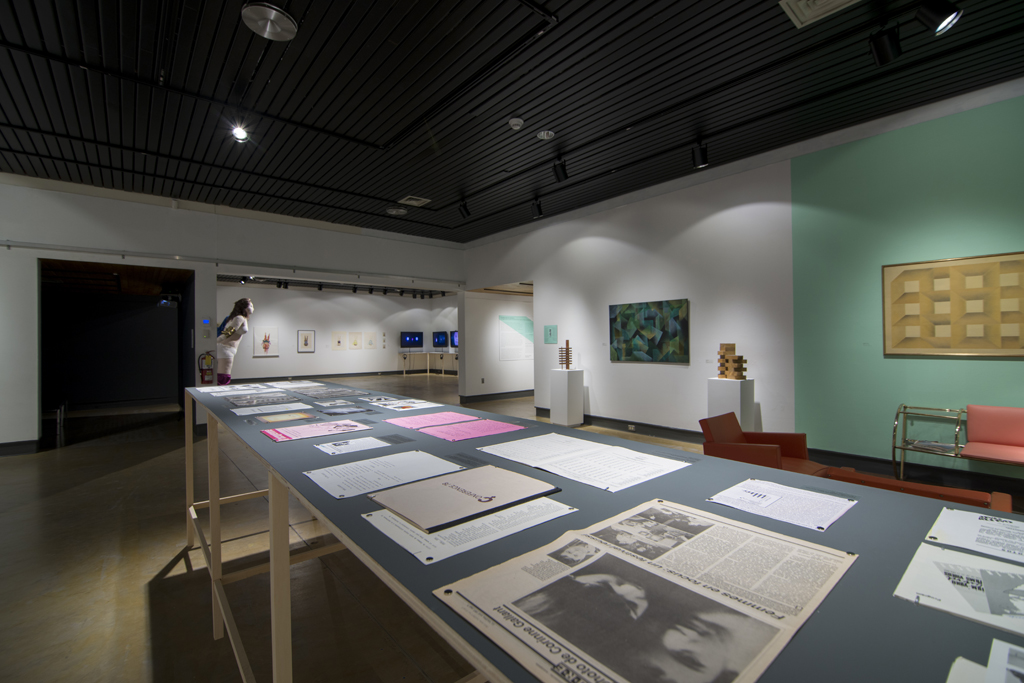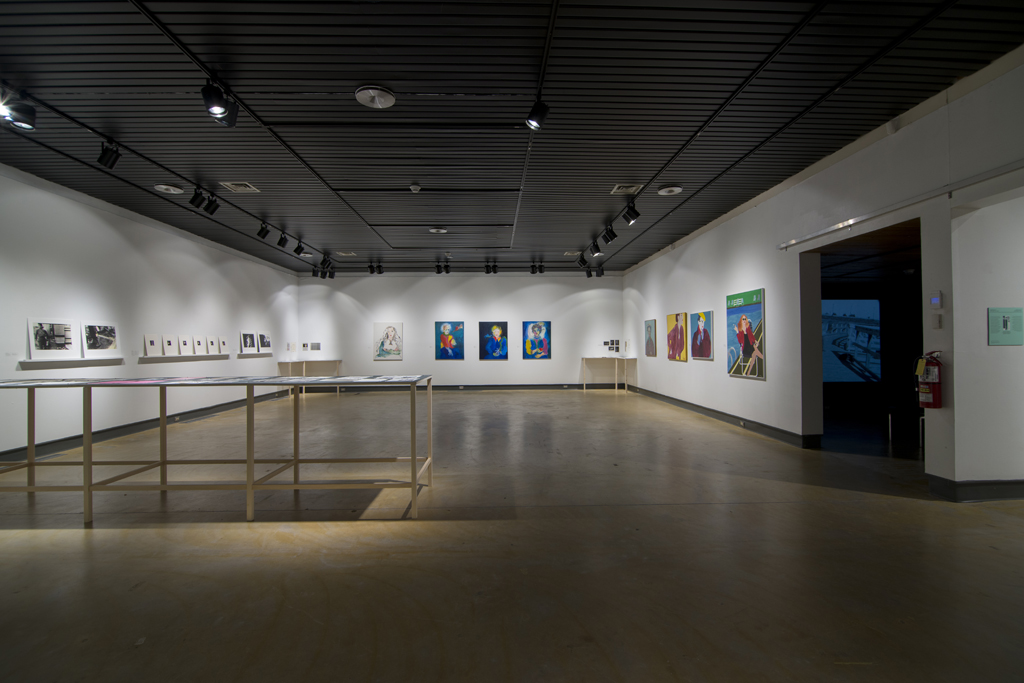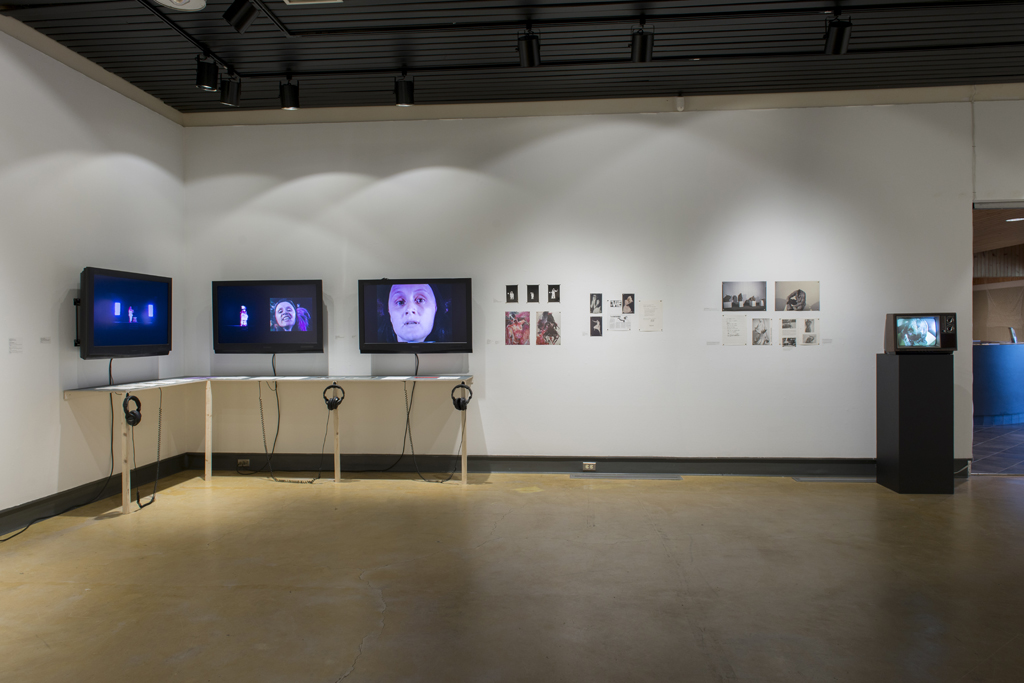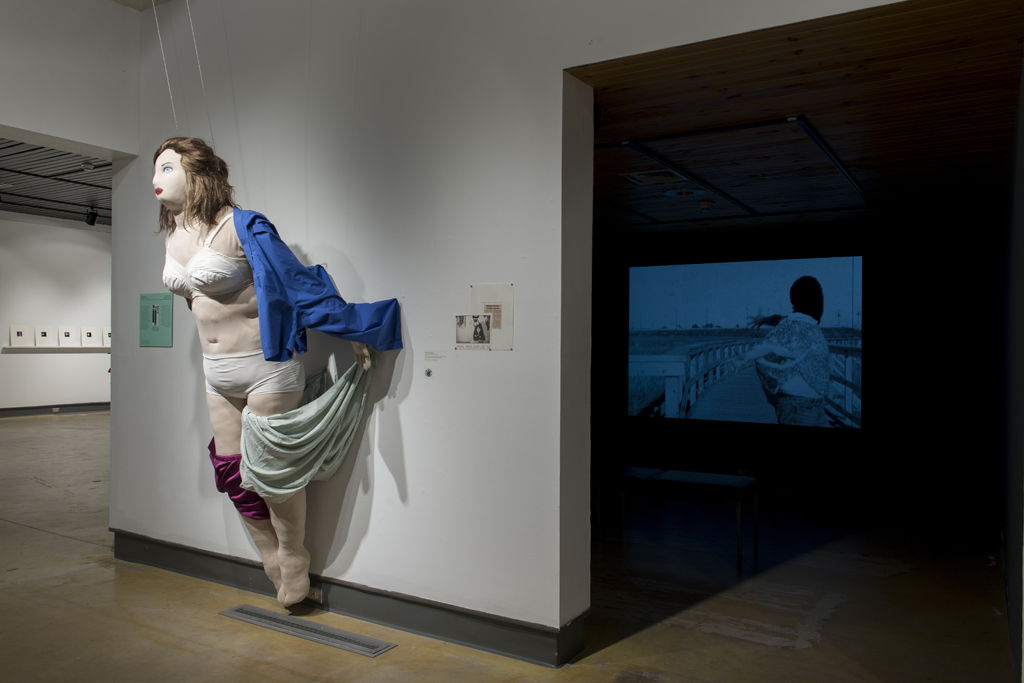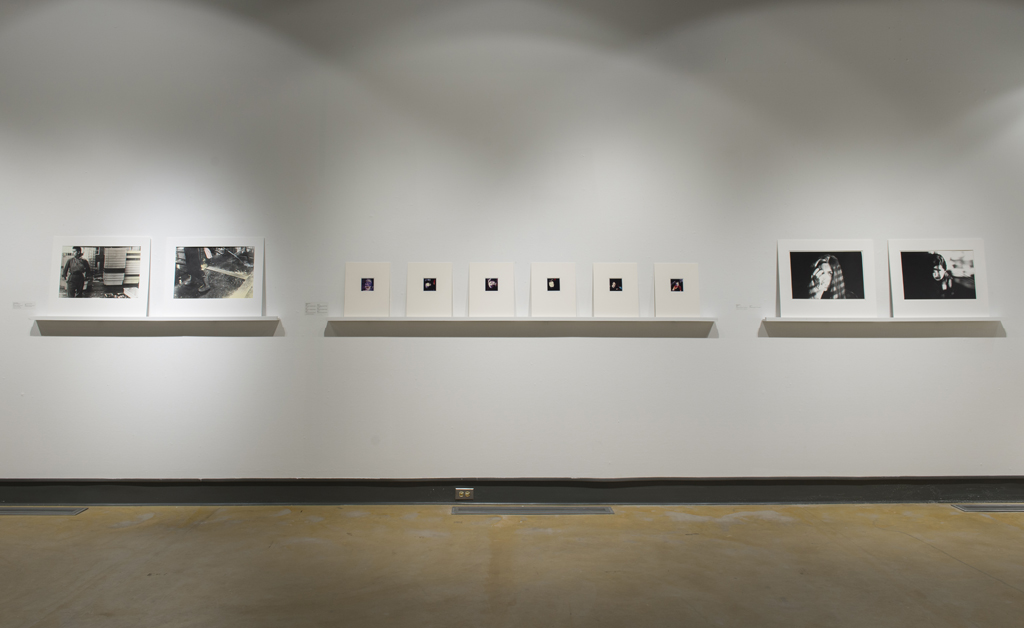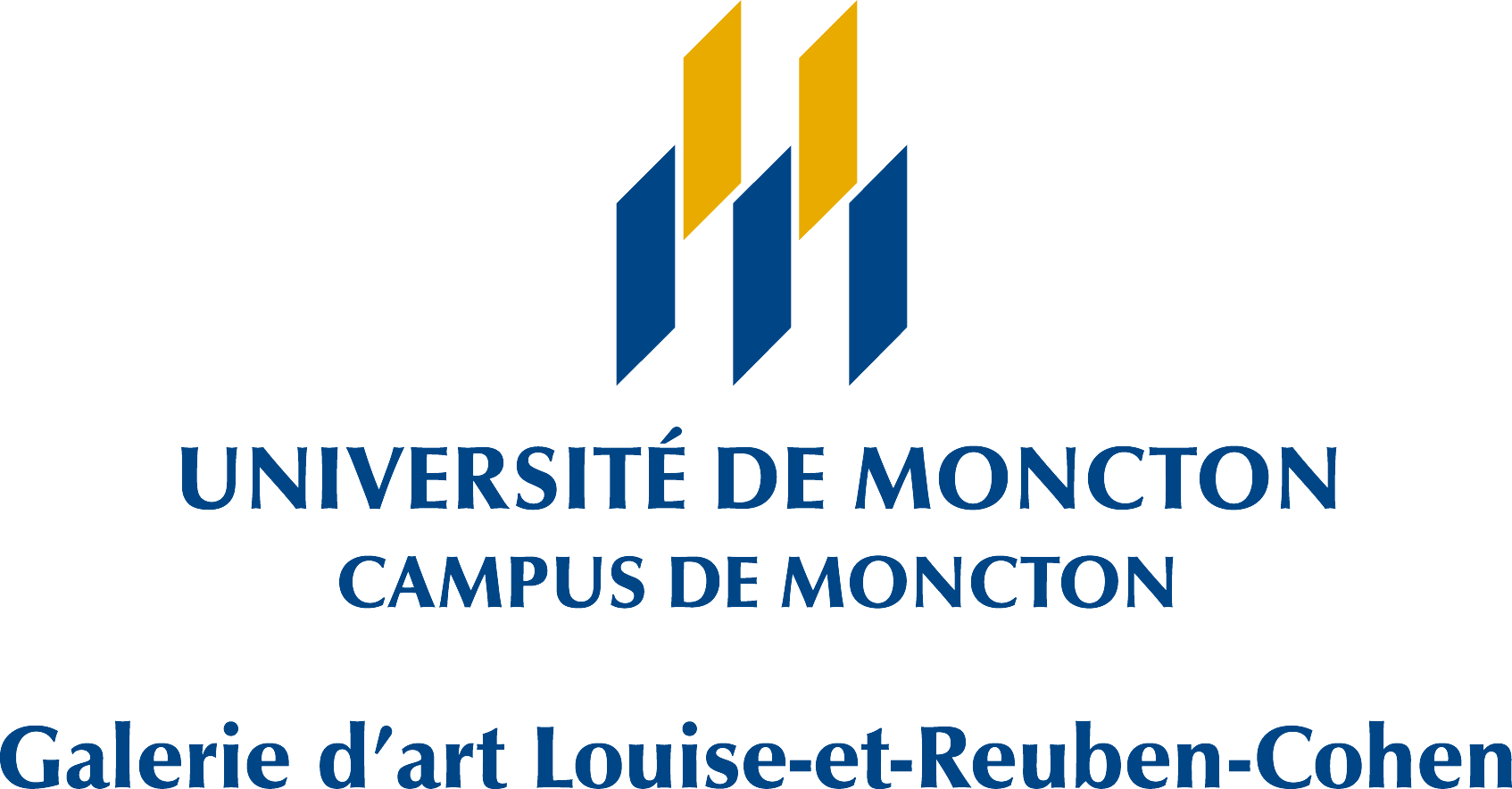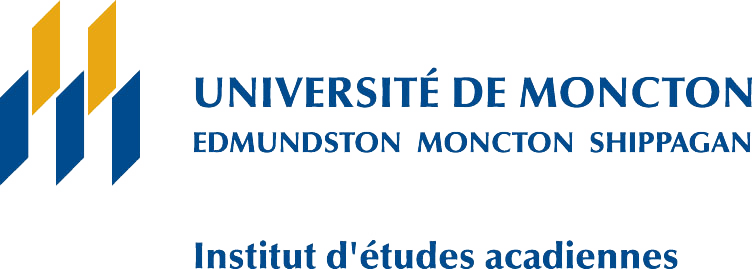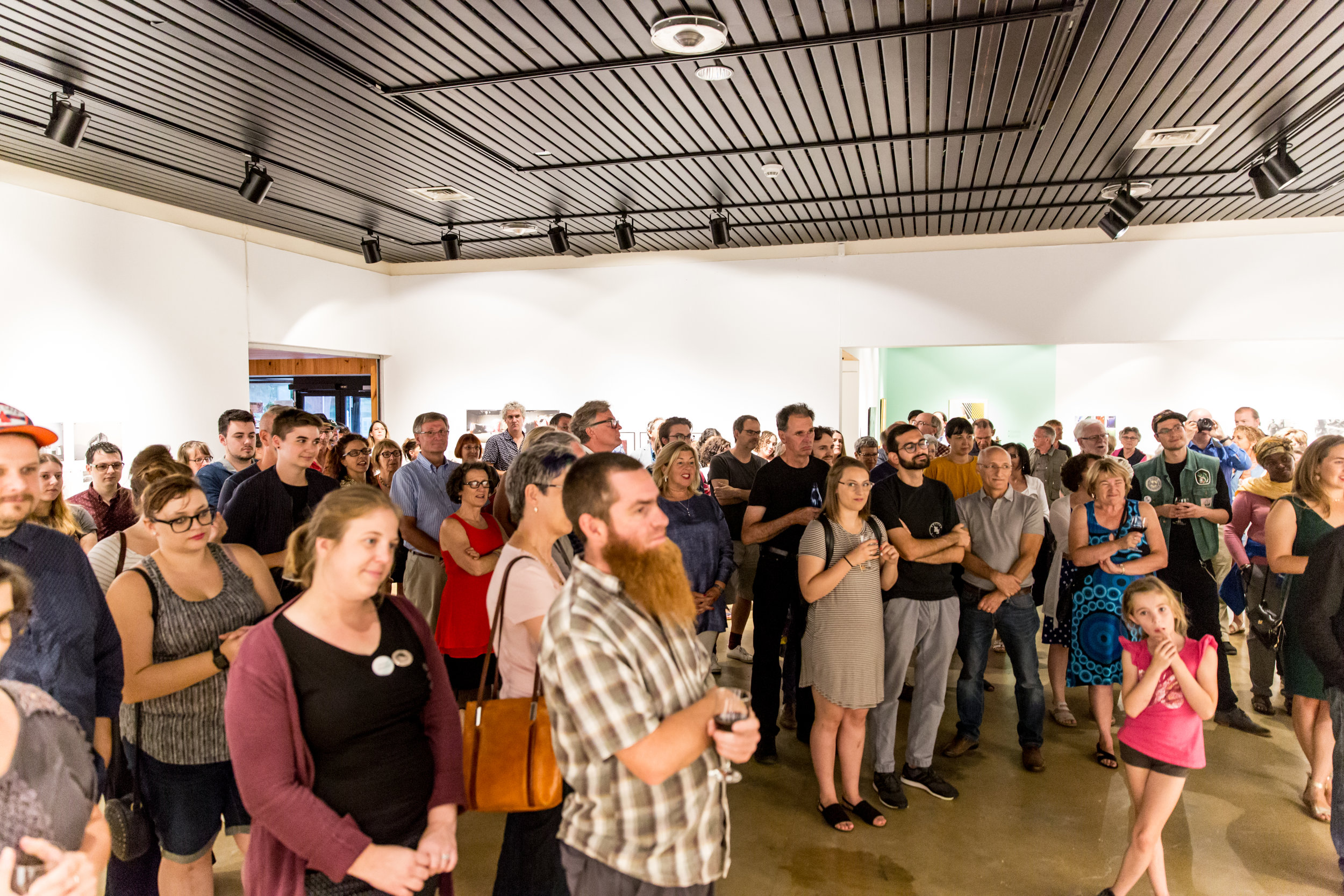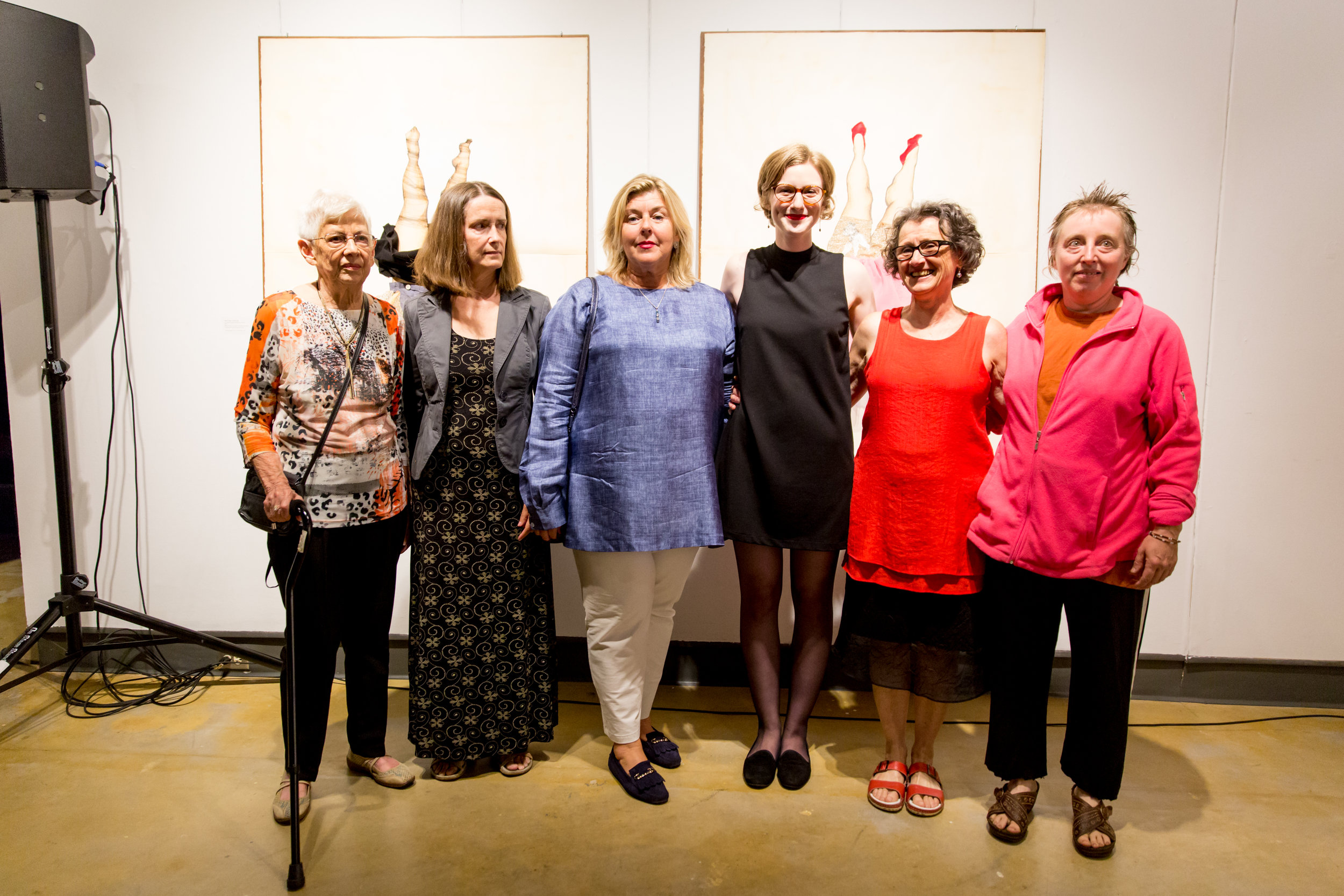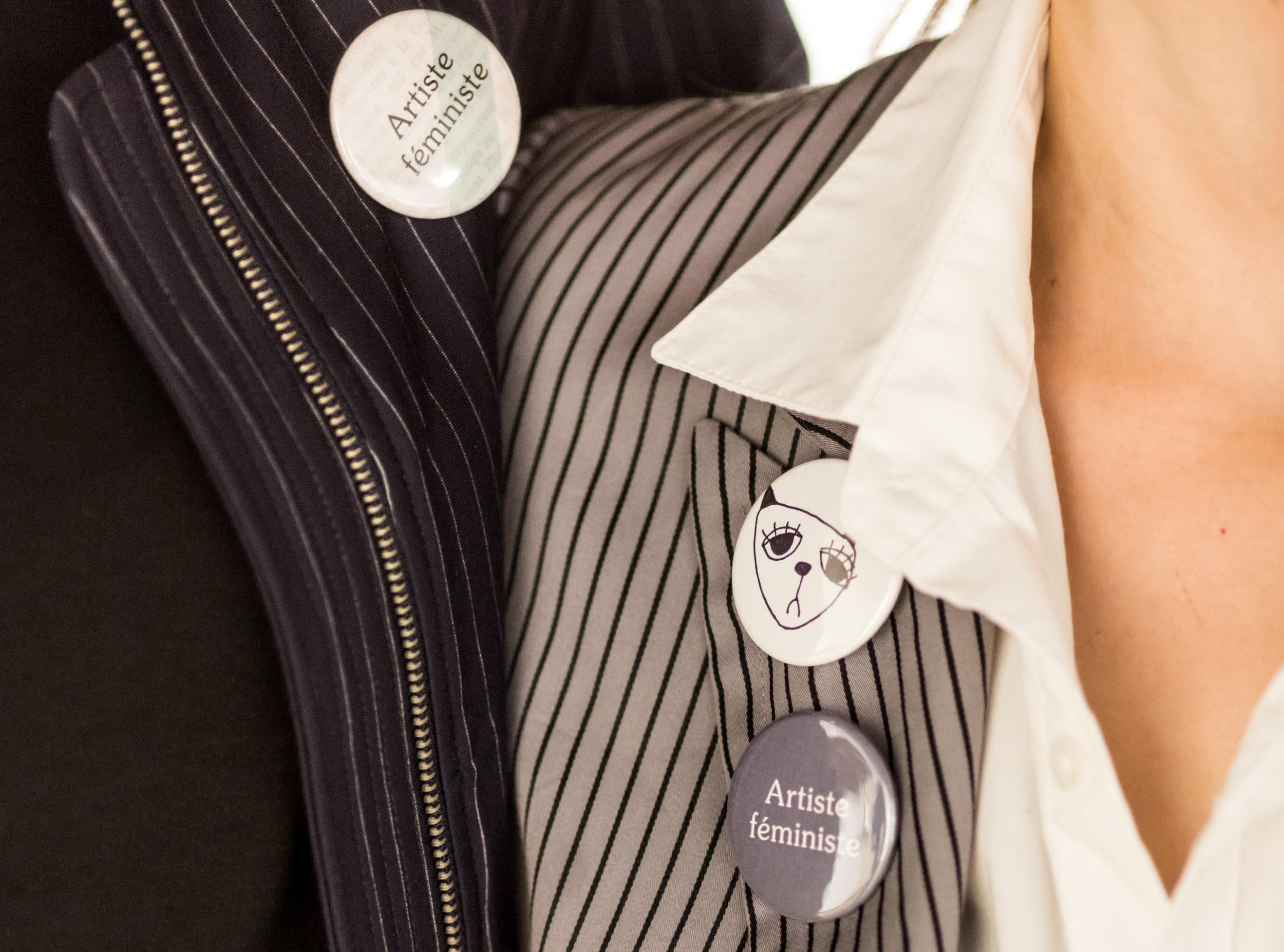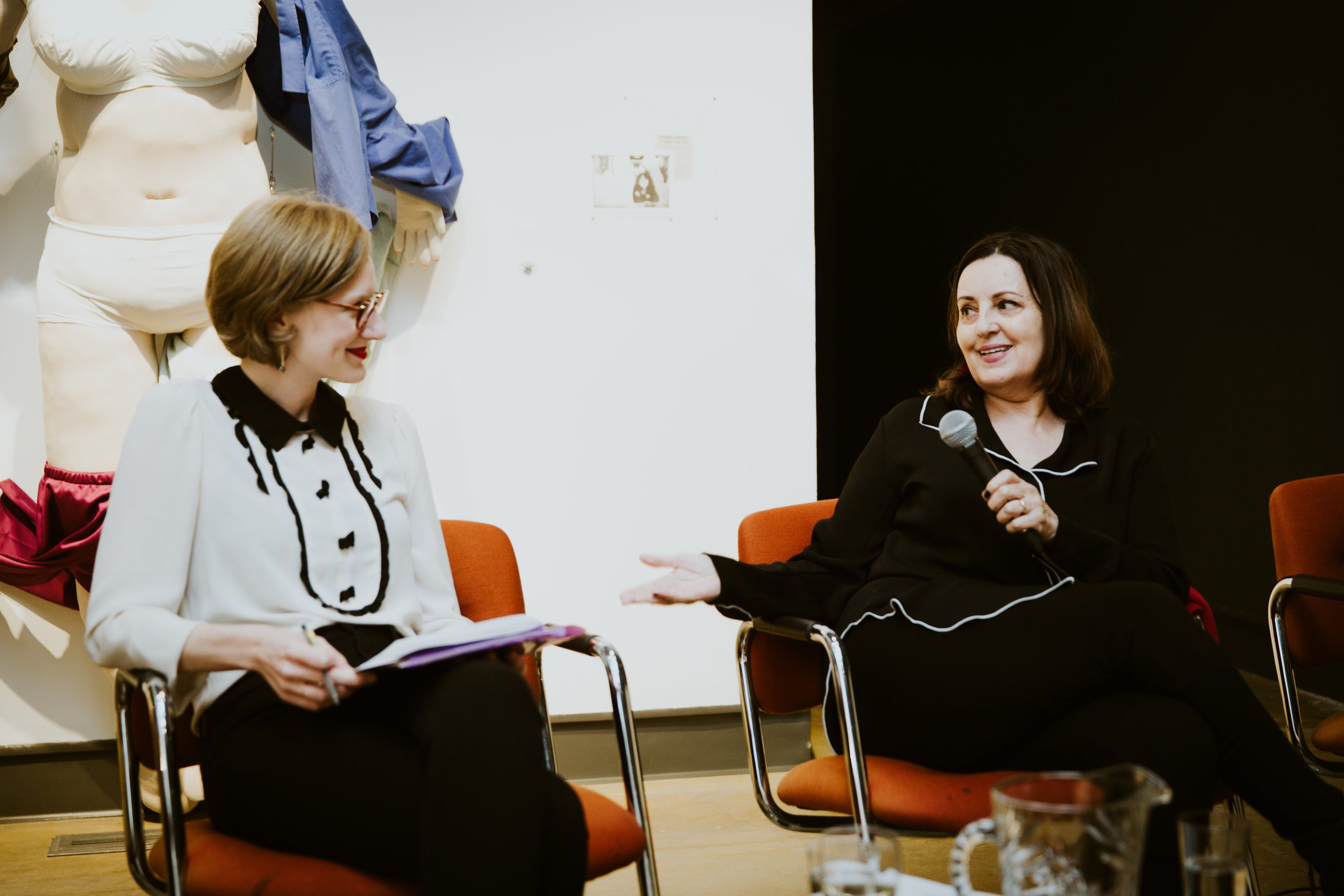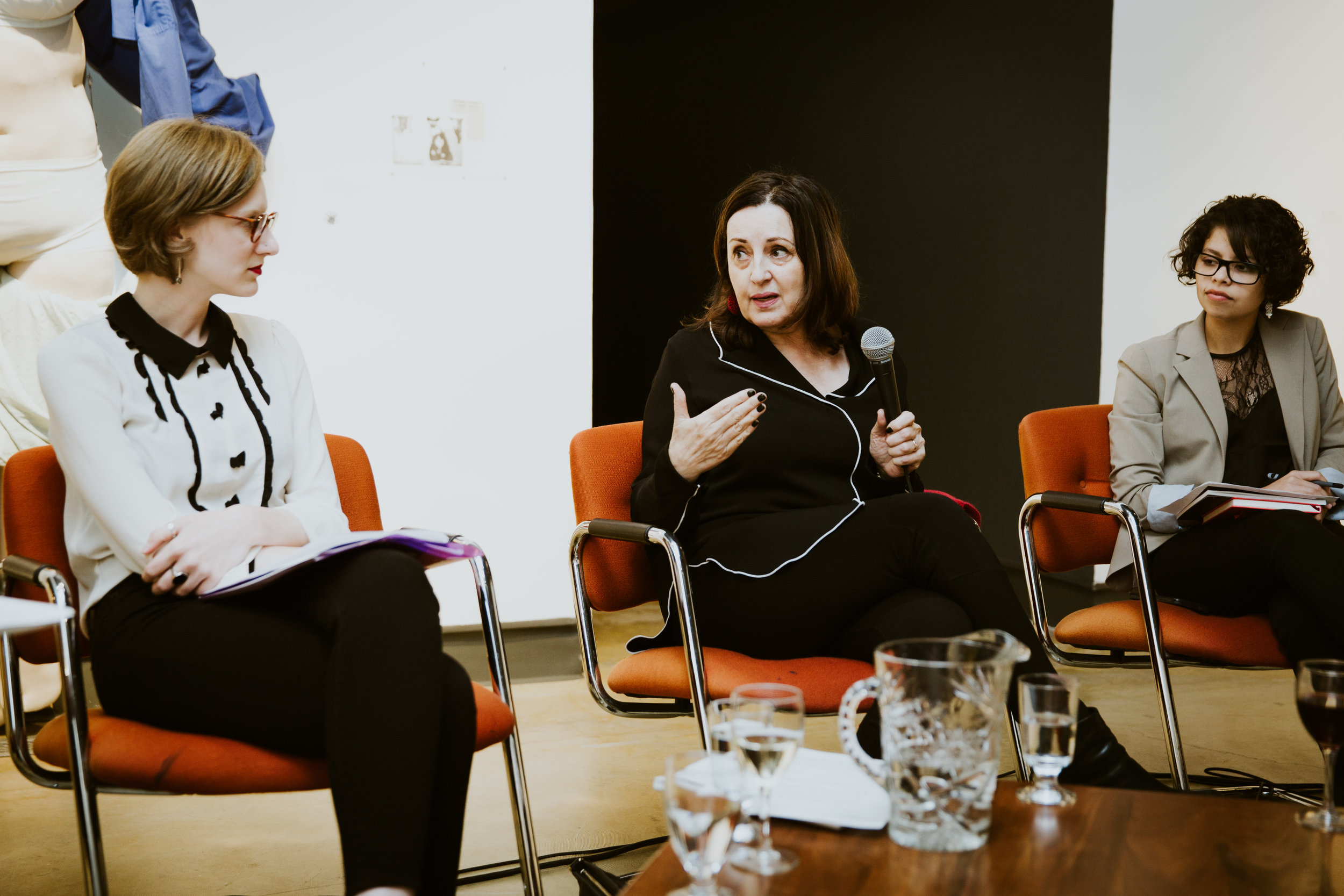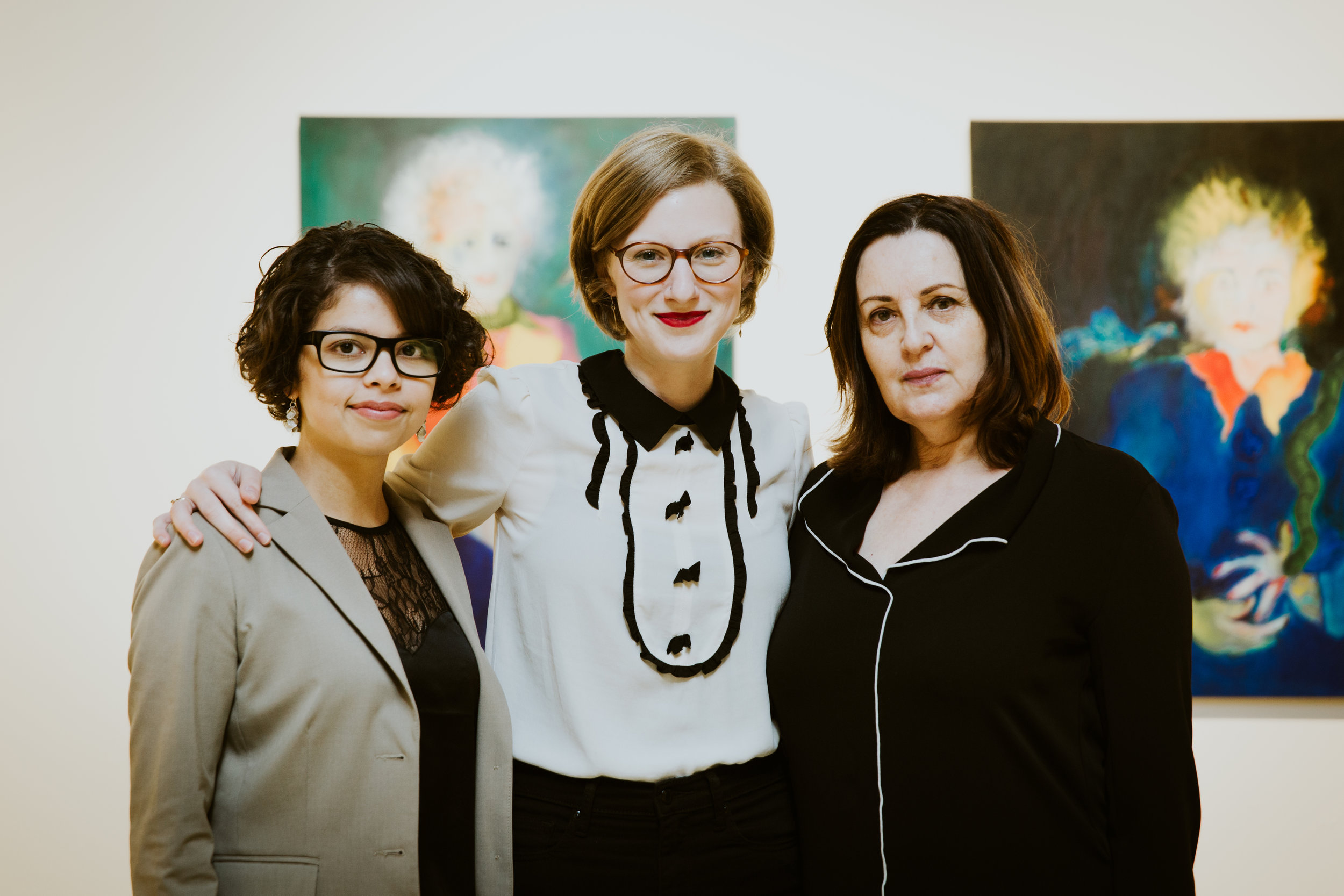Tombées dans les interstices // Exposition - Exhibition @ Galerie d'art Louise-et-Reuben-Cohen, Moncton N.-B.
Photos : Mathieu Léger
Tombées dans les interstices
Publication
Pour commander une copie / To order a copy :
eliseanne.laplante@gmail.com
Vernissage de l'exposition (11 août 2017) et lancement de la publication (29 septembre 2017) avec les auteures invitées Penny Cousineau-Levine et Nelly Dennene.
Photos : Annie France Noël
Tombées dans les interstices : un regard actuel sur l’apport de quelques femmes artistes à l’Acadie contemporaine
Par le biais des approches féministes, les femmes artistes ont revendiqué et revendiquent encore que leur apport à l’histoire de l’art soit reconnu et remettent en question les narrations historiques qui ignorent la contribution des femmes en tant qu’artistes. Cette prise de position est indispensable aux avancées dont les récentes générations peuvent bénéficier, mais il reste que les réflexions en ce sens doivent encore être alimentées et diffusées.
L’exposition Tombées dans les interstices met en lumière le travail de quelques-unes des femmes artistes qui ont participé au développement d’une identité artistique contemporaine en Acadie, tout en s’interrogeant sur le fait que les théories féministes en arts visuels ont connu si peu d’emprise en Acadie et sont encore aujourd’hui peu discutées dans les pratiques artistiques acadiennes. La présente étude s’intéresse à l’histoire de l’art acadien, qui débute dans les années 1960 et 1970, années où l’identité contemporaine de l’Acadie était en plein essor, et ce, de façon à comprendre comment et pourquoi les femmes artistes qui y ont contribué sont tombées dans l’oubli.
Afin de réagir aux répercussions de l’absence d’engouement pour le féminisme en arts visuels qu’on observe en Acadie à une époque où l’on pouvait ressentir un élan important chez nos voisines québécoises ou américaines, cette exposition remet en valeur les pratiques de certaines femmes qui ont œuvré en Acadie, principalement durant les années 1970 et 1980, et chez qui nous pouvons reconnaître une charge féministe. Ces femmes ont été écartées et sont tombées dans les interstices de la mémoire collective, les fentes quasi invisibles creusées par le patriarcat mais rendues imperceptibles par la normalisation de celui-ci dans l’histoire de l’art acadien. Les documents d’archives et les œuvres à discours féministe présentées nous permettent de constater qu’une production soucieuse des conditions féminines a bel et bien existé dans les milieux acadiens et la mise en valeur de ces œuvres nous incite à réfléchir à ce que représentent actuellement les féminismes liés aux arts en Acadie.
Les artistes Yvette Bisson et Géraldine Cormier, aujourd’hui nonagénaires, font figure de pionnières. Leur féminisme n’est pas tant perçu dans leurs œuvres que dans la persévérance avec laquelle elles ont pratiqué la sculpture et la peinture, techniques traditionnellement dominées par les hommes. Ensuite, témoignant de la contribution des femmes artistes à l’éclatement des disciplines qui a marqué l’art contemporain, sont rassemblées les œuvres de Nancy Morin, Ginette Gould et Magda Mujica sous le thème du portrait et de l’autoportrait au féminin, et celles de Yolande Desjardins, Dominique Ambroise et Suzanne Valotaire sous le thème de l’exploration et de l’affirmation du corps. Ces rassemblements sont perméables et sont conçus comme étant complémentaires, et comme dans la plupart des expositions de groupe d’artistes femmes ou à caractère féministe, le fil conducteur se veut non pas esthétique, mais bien d’ordre social et politique.
Elise Anne LaPlante
Commissaire
***
Tombées dans les interstices: A Contemporary Look at the Contribution of a Few Women Artists to Modern-day Acadie
Women artists have employed and continue to employ feminist approaches to demand that their contribution to art history be recognized, calling into question historical narratives which ignore the contribution of women as artists. This position has been indispensable to the progress benefiting recent generations, but it remains the case that this sort of feminist thinking must be maintained and become more widespread.
The exhibition Tombées dans les interstices highlights the work of some of the women artists who have contributed to the growth of a contemporary artistic identity in Acadie and examines the fact that feminist theories in the visual arts have had so little impact in Acadie and still today are little discussed in Acadian artistic practices. The present study explores the history of Acadian art, which began in the 1960s and 70s, when contemporary Acadian identity was taking off, in order to understand how and why the women artists who contributed to this history have fallen into oblivion.
In order to react to the repercussions of the lack of interest in feminism in the visual arts apparent in Acadie at a time when the movement was in full flight amongst our neighbours in Quebec and the United States, this exhibition will highlight the artistic practices of a few women who were active in Acadie, mainly during the 1970s and 1980s, and in whose work we can see a feminist impulse. These women were sidelined and fell into the cracks of collective memory, those almost invisible fissures opened up by the patriarchy but made imperceptible by the normalization of this patriarchy in the history of Acadian art. The artworks with a feminist discourse being exhibited show us that art concerned with women’s conditions did exist in the Acadian community, and exhibiting these works again prompts us to reflect on what the feminisms around the arts in Acadie represent today.
The artists Yvette Bisson and Géraldine Cormier, today in their nineties, were pioneers. Their feminism is apparent not so much in their artwork as it is in the perseverance with which they practised sculpture and painting, disciplines traditionally dominated by men. After them, and illustrative of the contribution of women artists to the splintering of disciplines witnessed in contemporary art, the work of Nancy Morin, Ginette Gould and Magda Mujica is brought together under the theme of women’s portraits and self-portraits, and the work of Yolande Desjardins, Dominique Ambroise and Suzanne Valotaire under the theme of exploring and affirming the body. These groupings are permeable and conceived as complementary. In addition, like most group exhibitions of women artists, or exhibitions which are feminist in nature, the common thread running through the exhibition is not aesthetic but rather social and political.
Elise Anne LaPlante
Curator
